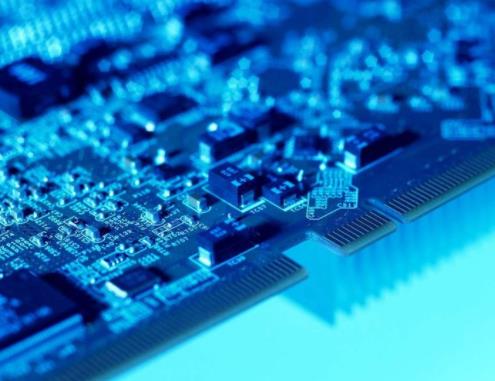PCB基板が完全に電気的に安定していることを望んでいますが、実際の状況はそうではありません。現実世界は完全な導体と絶縁体で構成されているわけではありません。それらは真空に囲まれており、電界は現実システムの導体と基板と相互作用します。ICを設計するにしてもPCBにしても、不完全な電子製品の重要な影響:エレクトロマイグレーションを考慮しなければならない。エレクトロマイグレーションとは?なぜエレクトロマイグレーションが発生したのか?さらに重要なのは、どのように予防するか?簡単なPCBとICのエレクトロマイグレーション分析。目的は、これらのデバイスが異なる条件で短絡したり、オープンしたりするのを防ぐことです。このためにいくつかの業界標準が制定されている。これらの基準と、移行がどのようにして新しいデバイスの障害を引き起こすのかを理解する必要があります。
電子のエレクトロマイグレーション
より小さなスペースに多くの部品を積層すると、特定の電位差を持つ2つの導体間の電界が大きくなる。これは、高電圧電子機器におけるいくつかの安全上の問題、特に静電気放電(ESD)につながる。空気で隔てられた2つの導体間の高い電界は、空気の絶縁破壊を引き起こし、それによって周囲の回路にアークと電流パルスを発生させます。PCB基板やその他の機器においてこのような放電を防ぐためには、導体間の電位差に応じた一定の間隔を空けて導体を分離する必要があります。上記のギャップ距離は、安全性や機器の故障を防止するために重要ですが、基板間の距離も重要です。もう一つ考慮すべき点は、誘電体を横切る導体間の距離です。PCB基板ではこれを沿面距離と呼ぶ。導体間の距離が小さいと電界が大きくなり、エレクトロマイグレーションが発生することがあります。導体内の電流密度が大きい場合(ICの場合)、または2つの導体間の電界が大きい場合(PCB基板の場合)、エレクトロマイグレーションを促進するメカニズムは指数関数的成長と言えます。エレクトロマイグレーションを防ぐには、3つのレバーを使って設計を引っ張ることができます:
導体間の間隔を広げる(PCB基板内)、導体間の電圧を下げる(PCB基板内)、デバイスを低電流で動作させる(IC内)。

ICにおけるエレクトロマイグレーション:オープンサーキットとショートサーキット
IC相互接続では、主な力は2つの導体間の電界とそれに続くイオン化ではない。逆に、固体エレクトロマイグレーションは高電流密度での電子運動量移動(散乱)に起因し、これにより金属は導電経路(この場合、金属相互接続自体)に沿って移動する。移動速度は相互接続温度の上昇とともに増加した。銅の電気移動にかかる力は以下の通りである。風力とは、格子中の金属原子からの電子の散乱によって金属イオンに加わる力を指す。この繰り返しのイオン化と運動量は自由金属イオン上に移動し、アノードへの拡散をもたらす。この移動過程は活性化エネルギーを有し、金属原子に移動するエネルギーがアレニウス活性化過程を超えると、方位拡散が始まり、濃度勾配(フェナントリック法則)の案内の下で行われる。金属が導体表面に引っ張られると、2つの導体をブリッジできる構造を構築し始め、短絡を引き起こす。また、相互接続アノード側の金属を使い果たし、開放をもたらします。以下のSEM画像は2つの導体間の拡張電気移動の結果を示している。金属が表面に沿って移動すると、ギャップ(開回路)が残ったり、隣接する導体に接続されたホイスカ(短絡)が発生したりします。オーバーホールを有する極端な場合、電気移動は被覆層下の導体を枯渇させる可能性さえある。
PCB基板におけるエレクトロマイグレーション:樹枝状成長
PCB基板でも同様の影響が生じ、2つのエレクトロマイグレーションが発生する可能性がある:
上述したように、表面に沿ったエレクトロマイグレーション、半導体塩の形成は、樹枝状構造の電気化学的成長をもたらす。これらの効果は、異なる物理的プロセスによって制御されている。金属トレースのサイズがICインターコネクトの断面積に比べて非常に大きいため、2つの導体間の電流密度が低い場合がある。この場合、高い電流密度でマイグレーションが発生し、経時的に同じタイプのスタブが成長する。表面層では、導体が空気にさらされるため、酸化が進行する可能性があります。第二の場合、エレクトロマイグレーションは電解プロセスである。この電界は、水と塩の存在下で電気化学反応を駆動する。電解エレクトロマイグレーションでは、表面に水分があり、2つの導体間に高い直流電流が流れていることが必要で、これが電気化学反応と樹枝状構造の成長を促進する。移動した金属イオンは水溶液中に溶解し、絶縁基板全体に拡散する。隣接する導体間の距離を広げると、導体間の電界が減少し、電解エレクトロマイグレーションの駆動反応が抑制される。新しいレイアウトでのエレクトロマイグレーション解析では、トレースギャップが設計ルールや業界標準に違反していないことを確認するために設計をチェックする必要があります。基本的なPCBボードやICレイアウトツールを使用することができれば、これらのルールに照らしてレイアウトをチェックし、違反を見つけることができます。ICやPCB基板の小型化に伴い、信頼性を確保するためのエレクトロマイグレーション解析の重要性はますます高まるでしょう。